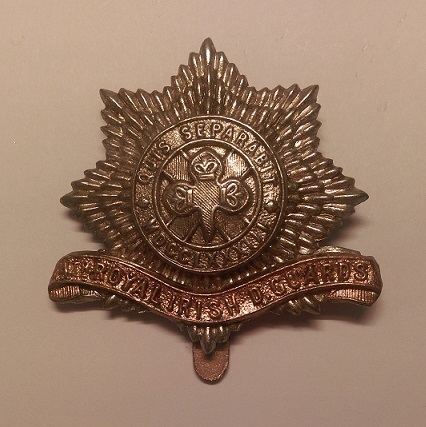Active 1685–1922 Type Cavalry Size 1 Regiment | Role Line Cavalry | |
 | ||
Country Kingdom of England (1685–1707) Kingdom of Great Britain (1707–1746, 1788–1800) Kingdom of Ireland (1746–1788) United Kingdom (1801–1922) | ||
The 4th Royal Irish Dragoon Guards was a cavalry regiment in the British Army, first raised in 1685 as the Earl of Arran's Regiment of Cuirassiers. It was renamed as the 4th (Royal Irish) Dragoon Guards in 1788 and service for two centuries, including the First World War, before being amalgamated with 7th Dragoon Guards (Princess Royal's), to form the 4th/7th Dragoon Guards in 1922.
Contents
History
The regiment was first raised by James, Earl of Arran as the Earl of Arran's Regiment of Cuirassiers in 1685 as part of the response to the Monmouth Rebellion, by the regimenting of various independent troops, and was ranked as the 6th Regiment of Horse. It fought at the Battle of the Boyne in July 1690 and the Battle of Steenkerque in August 1692 during the Williamite War in Ireland. In 1691 it was re-ranked as the 5th Horse, and in 1746 transferred to the Irish regiment establishment where it was the ranked 1st Horse. It returned to the British establishment in 1788, as the 4th (Royal Irish) Dragoon Guards.
The regiment was then involved in activities in support of the Invasion of France by émigrés in June 1795 before taking part in fighting at the Battle of Naas on 24 May 1798, the Battle of Prosperous also on 24 May 1798 and the Battle of Tuberneering on 4 June 1798 during the Irish Rebellion. At Tuberneering a troop from the regiment were ambushed and the troop commander, Lieutenant-Colonel Walpole and 100 of his men died. The regiment went on to fight at the Battle of Arklow on 9 June 1798 and the Battle of Vinegar Hill on 21 June 1798.
The regiment was deployed to the Peninsula in 1811 and fought under General Sir John Slade at the Siege of Ciudad Rodrigo in January 1812 during the Peninsular War. It also took part in the charge of the Heavy Brigade at the Battle of Balaclava in October 1854 during the Crimean War and in the Battle of Tel el-Kebir in September 1882 during the Anglo-Egyptian War.
The regiment landed in France at the outbreak of the First World War as part of the 2nd Cavalry Brigade in the 1st Cavalry Division on 16 August 1914 for service on the Western Front. Perhaps the most notable engagement of the regiment was on 22 August 1914, when a squadron of the regiment became the first members of the British Expeditionary Force to engage the German army outside Mons; four patrolling German cavalrymen of the 2nd Kuirassiers were surprised by two full troops of British cavalry, and after a brief pursuit several were killed. Captain Charles Hornby was reputed to have become the first British soldier to kill a German soldier, using his sword, and Drummer Edward Thomas is reputed to have fired the first British shots of the war.
In 1921, it was retitled the 4th Royal Irish Dragoon Guards and in 1922 was amalgamated with 7th Dragoon Guards (Princess Royal's), to form the 4th/7th Dragoon Guards.
Battle honours
The regiment's battle honours were as follows:
Colonels
The colonels of the regiment were as follows:
On 1 July 1751 a royal warrant provided that in future regiments would not be known by their colonels' names, but by their "number or rank".
In 1922 the regiment was amalgamated with the 7th Dragoon Guards (Princess Royal's) to form the 4th/7th Royal Dragoon Guards.
